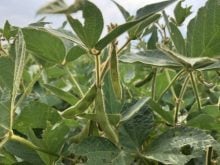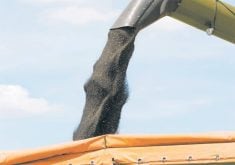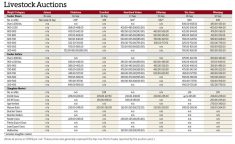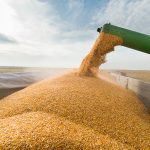Three Manitoba cattle auction sites held regular sales during the week ended July 11, and one shut down for the season.
Gladstone Auction Mart had 358 cattle go through the rings at its final sale of the season July 9. Tyler Slawinski, auctioneer at Gladstone and Ashern Auction Marts, said slaughter cattle prices in Gladstone took a step back from the last two weeks.
He cited the ongoing strike at the Cargill processing plant in Guelph, Ont., forcing more cattle into Western Canada, as well as meat processor JBS backing off on slaughter cattle purchases in favour of fat cattle in Manitoba.
Read Also

Canadian canola futures vibing
Recent comments from Chinese and Canadian officials offered a shot of positive vibes that lifted ICE canola futures to their highest levels in a month, even without any actual concrete developments on the trade front.
“The competition is probably backed up a little bit, but local demand is still fairly strong and that’s been keeping our cow and bull market very steady,” he said.
“We’re seeing a lot more plainer-type cattle. Every sale that’s going on right now, you can’t get enough (cattle) to put loads together … Anything that’s trading now is going to be staying very local.”
D1 and D2 cows sold for $160 to $192 per hundredweight during the week. Mature bulls brought in $185 to $245/cwt., compared to $155 to $240 in the previous week.
A heat wave with temperatures above 30 C across the Prairies can stress cattle and can also lead to more flies. Slawinski said cattle producers must provide shade for their animals and check on dugout water levels. On the other hand, the heat will allow grass to mature, providing more sustenance.
“The cattle won’t like to eat it as much, but it will be better for them as far as weight gain is concerned,” he said. “The water table is fairly high. Drought conditions are minimal … We still need adequate rainfall, but everything in moderation.”
Cattle futures at the Chicago Mercantile Exchange dropped in the week following Independence Day. The August live cattle contract hit its highest price since October on July 5 at US$188.250/cwt., but fell to $182.250 to close July 11 for a weekly loss of $3.675.
The August feeder cattle contract closed at $256.150/cwt. on July 11, recording a loss of $7.225 from one week earlier.
Looking back at the 2023-24 cattle marketing season, Slawinski said it was a banner year, and he had never seen volumes stay so strong for so long. When cattle auction sites reopen this fall, he believes high volumes will continue.
“Any cow that isn’t pulling its own weight on the family farm or looks at the cattle producer the wrong way, they’re obviously going to end up going to town,” Slawinski said.
“I’ve heard some cattle producers say they’ve got some cull cows with calves on them. They’re not going to bother breeding them. They’re going to just split the pairs in the fall and the cows will be going to town (with) the same for the calves.
“I think the slaughter cow and bull market is going to maintain strength and consistency as far as volumes go.”
















